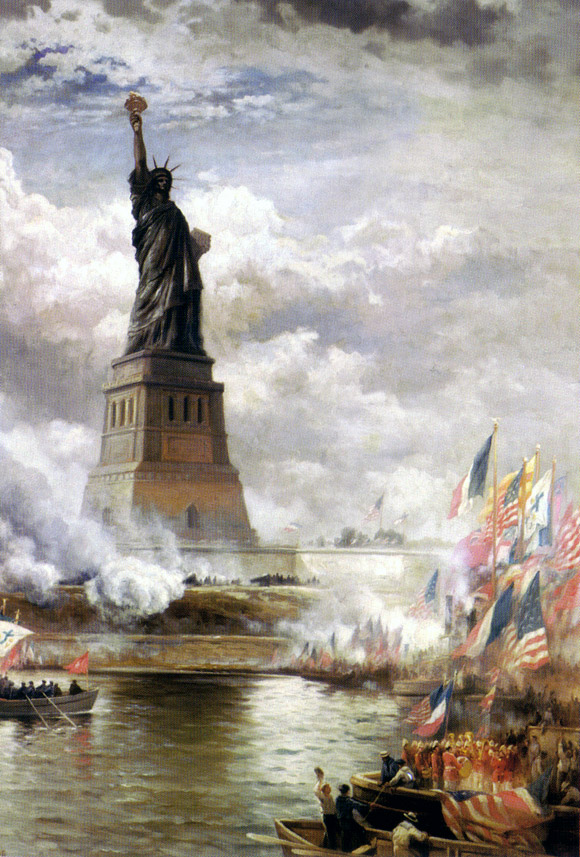Funding Liberty

The Statue of Liberty has been gracing New York Harbor since its dedication in 1886. A gift from France, Lady Liberty has, in the century plus since, become a symbol for freedom, justice, and hope across the country.
And, but for a dedicated newspaper man, it almost did not made its way to America.
When France offered the Statue to the United States, it did so with the understanding that while France would fund the construction of the statue itself, the U.S. would be responsible for building the statue’s pedestal. This latter part proved controversial and difficult. The United States was still reeling economically from the Panic of 1873 and the statue was a decorative, non-functional public works project — and therefore, considered a luxury. The tenor of the populace was probably well captured by the New York Times, which opined in the late 1870s that “no true patriot can countenance any such expenditures for bronze females in the present state of our finances.”
When fundraising began in 1882, it was slow going. The pedestal would cost about a quarter of a million dollars (or about $5.5 million in present day terms), and the fundraising committee found early success by auctioning off donated items from the era’s celebrities. But the fundraising stalled with only about half of the requisite amount raised. The New York state legislature passed a bill to give $50,000 to the efforts, but that bill was vetoed by then-governor Grover Cleveland. The federal government considered legislation which would fund the project to the tune of $100,000, but that bill never made it out of Congress. The pedestal-building committee, having only $3,000 in the bank and needing roughly another $100,000, suspended construction.
Then entered Joseph Pulitzer. The famed owner of the St. Louis Post-Dispatch and New York World (and, of course, the namesake of the later-created Pulitzer Prizes) was an outspoken supporter of the Statue project and wanted to see it built to completion. Of his own volition, he leveraged his New York audience for the benefit of the pedestal project. Using the World’s readership — at the time, it had a circulation of roughly 100,000 people — he came up with a fundraising idea. He offered to publish the name of anyone who donated to the pedestal project, no matter how small the amount donated.
Pulitzer’s campaign spread throughout the country and response was overwhelming. Over 120,000 people made donations, with 80% of the donors giving under a dollar. And Pulitzer reached his goal: his offer brought in just over $100,000, and construction on the Statue of Liberty’s pedestal resumed.
Bonus fact: In 1892, Pulitzer offered Columbia University the financing required to created the first graduate school of journalism in the world, but the university’s president declined the offer, citing Pulitzer’s odd personality, per Wikipedia. Pulitzer, undeterred, tried again when a new president rose to power at the school, and ended up bequeathing $2 million to Columbia in his will. That money was used to set up not only the graduate school, but also the Pulitzer Prizes.
From the Archives: Soothsaying Crossword: A really cool use of a newspaper.
Related: A 3-D Statue of Liberty Puzzle. Build your own pedestal for a lot less than $100,000.

Leave a comment